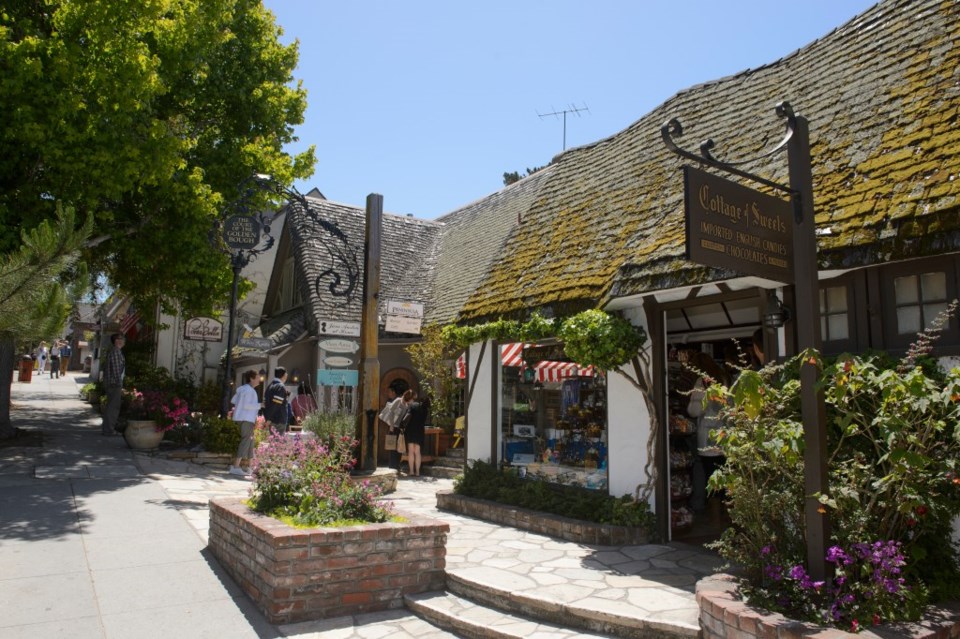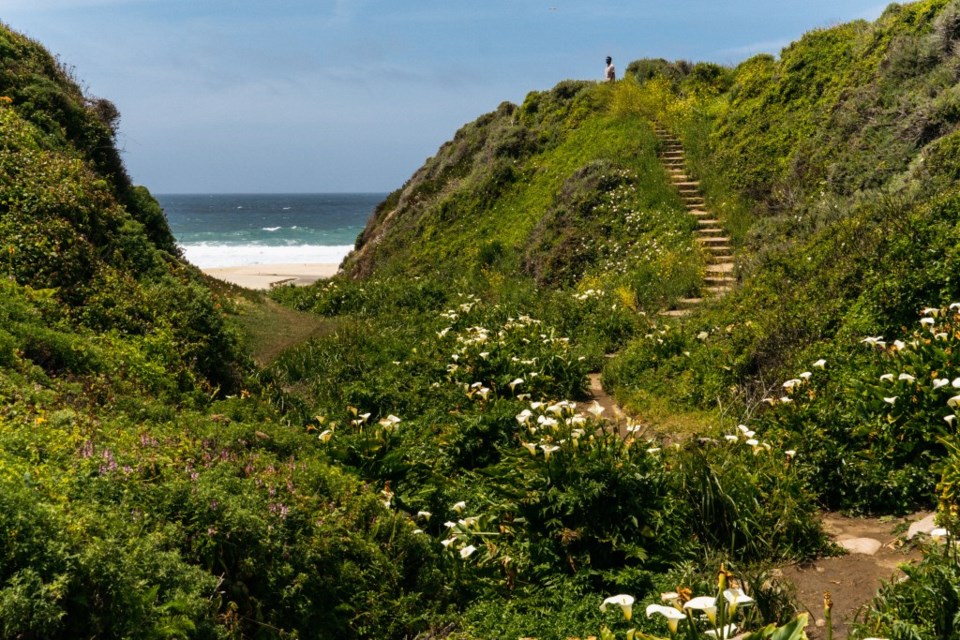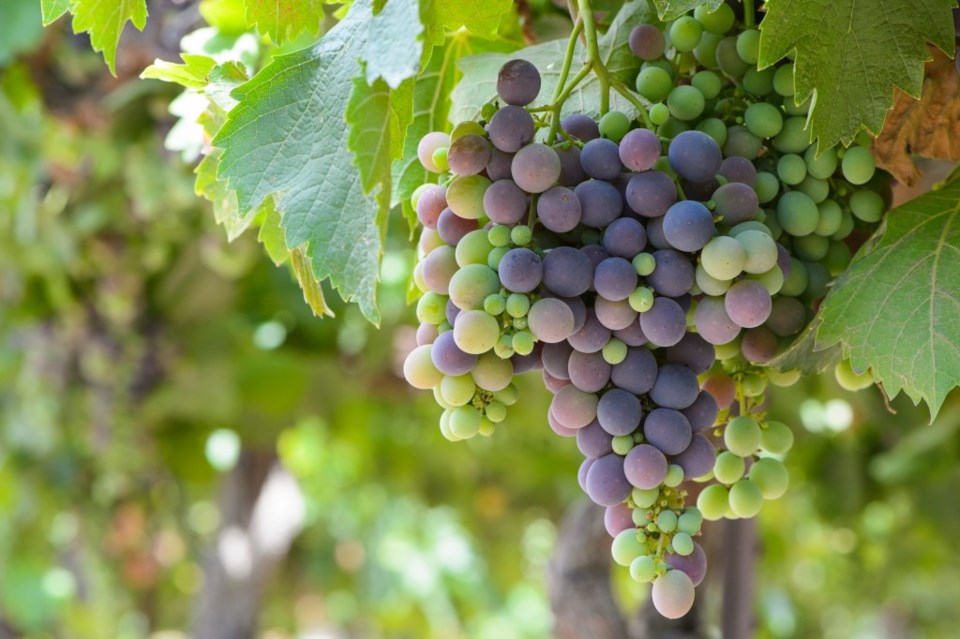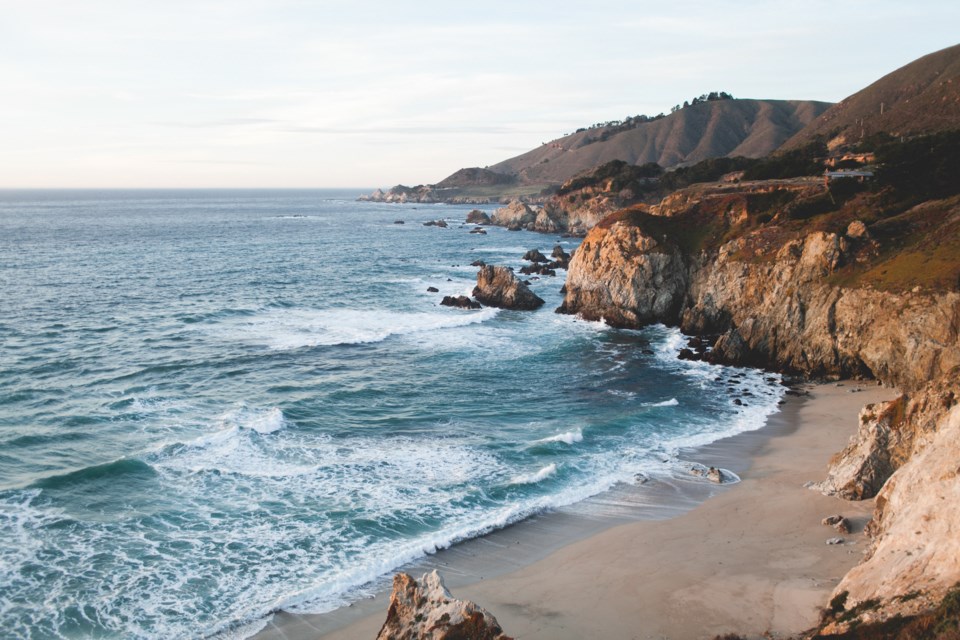I arrive in Monterey with a few other intrepid Texans just before noon on a Tuesday. The whole of Monterey Airport could fit inside a single gate at DFW International Airport. We deplane, meet our bags on the runway, and pass through the sliding double doors, almost straight into the tender care of our tour guide, Jessica, and our driver, Sam. Within twenty minutes of landing, we’re off the little plane, in a van and rolling through one of the most heavenly places on earth.
As of this spring, there’s a new nonstop flight from DFW to Monterey. If summer gets you down, the central coast is just four hours away.
First, we go to Carmel by the Sea. The people who live in Carmel by the Sea include Doris Day, Brad Pitt and Clint Eastwood, who successfully ran for mayor so that he could change the town laws and give himself permission to build an extremely mini minimall.
Sam is also a stuntman who has responsibly crashed over 300 cars throughout the duration of his career and doubled for actors like Patrick Swayze and Dennis Quaid. He does not crash the van, responsibly or otherwise, but he does know all the best spots and all the town quirks. Carmel by the Sea is only one square mile. The houses occupy small lots that are dotted with crooked, winding Monterey Cypress. One of the town rules states that homeowners cannot trim their own trees because of the scarcity of the trees, which are only found in the Carmel area.
There are no addresses in Carmel by the Sea. Instead, everyone has a PO box, making the post office a lively social hub. The houses themselves are a polished, unique crew. In lieu of addresses, most have names. Our favorite is Tootsie by the Sea. They range from cliffside Spanish villas, their terracotta roofs bright against the sky, to the enchanting fairytale cottages designed by Hugh Comstack in 1901, to a Frank Lloyd Wright beside the water. Another resembles a little castle; the man who built it for his wife constructed it out of stones that he retrieved from the beach, one by one. Carmel by the Sea is one of the most dog-friendly cities in the country; dogs stir up the ivory sand everywhere and most businesses have water bowls outside.
The central California coast is well known for sea life: seals barking at Fisherman’s Wharf, juvenile Great Whites cutting close to shore, blue whales visible from Highway One. Monterey bay is deceptively deep, a 300-foot drop off underwater that descends into Monterey Canyon. Rivaling the Grand Canyon, Monterey’s underwater Canyon yawns in the near distance. It’s key to Monterey’s livelihood, and part of what keeps the climate so temperate, the marine life close and the wine industry flourishing.

We stop for lunch at Yeast of Eden, a modern brewery in Carmel Plaza, for scintillating Szechuan cauliflower, fish tacos and flights of sour ale, including their iconic Good Thoughts brew, light and bright with orange peel. It’s near Wrath Winery, where we taste chardonnay and pinot noir, the best fruits of the Carmel Valley vineyards. Ironically, Wrath Winery’s owners were originally Texans, so it feels a little like coming home.
“We aren’t trying to make it big. We just want to make and share amazing wine,” one of the sommeliers explains. They talk shop and trade grapes with the other postage-stamp operations, just to see what other wineries can do with their product, just for the joy of it. Rather than competitors, the owners of the other vineyards along the valley are more like family, united by their shared passion. The sommeliers recommend we drop by another tasting room and local art gallery that a friend of theirs owns down the street.
Next door, a cheese shop offers unlimited samples and pairing recommendations, which a cattle dog is browsing with his person. It’s a two-stop-shop for the beach picnic dreams are made of.
I explore Carmel by the Sea alone for the next two hours with no map or plan. On my way to see the Hog’s Breath Inn—figuring that since Clint Eastwood has a stake in it he might be around—I see an interesting sign: “Welcome for the adventurous, there is a unique shop hidden down this path. The walk leads to the secret garden then continues onto Dolores Avenue.” Carmel by the Sea has a secret garden. It hugs Pilgrim’s Way Bookstore, where bestsellers and local authors sit side by side on the shelves. The air is filled with soft music, trickling fountains and other spa sounds. Wind chimes hang everywhere. Tender baby succulents sit in rows or baskets between garden statues. It’s the sort of place you’re likely to stumble upon, wandering down little streets.
Outside the garden, continuing through Carmel by the Sea’s boutiques, I keep an eye out for the pretzel sign that hangs above Carmel Bakery, the oldest continually operating business in Carmel. It opened in 1906 with basically the same European-style pastries and pretzels served today. The coffee is standard Starbucks, so craft coffee fans will be best pleased down the block at Carmel Coffee and Cocoa Bar, but the bakery shelves are resplendent: fat cannoli, tea cookies, brownies, pretzels, caramel apples. It isn’t trendy (meaning nothing is shaped like a unicorn) and the only hint of blue frosting is on a flower-shaped dog biscuit. Half the pastries aren’t even labeled. It’s awesome. I take a cherry tart the size of my palm and crystallized with sugar down to the beach. I pass Brad Pitt’s house on the way. I don’t think he’s home. In the end, I don’t even make it to Hog’s Breath Inn, but I do see some seals, as well as dogs roughing it up in the surf.
Dinner that evening comes straight from the beach. Edgar’s restaurant at Quail Lodge and Resort sits pretty on a golf course, where it feels mountainous and rugged. One of their best dishes is the Monterey Bay Sand Dabs. Sustainable and sold fresh and whole, these small fish are as flat as flounder, baked and layered on top of pureed potatoes in buttery caper beurre blanc. We pass the evening looking out over the golf course as the sun sinks below the hills into the sea.
Early the next morning, I don’t have anywhere to be for two hours, except the private curtained patio of my hotel room, where I sit with steam rising from my mug of English Breakfast and a novel. It’s delightfully cool outside, the wind out of Monterey Bay carrying salt and the distant barking of some very agitated, very loud seals. The Portola Hotel and Spa is about a block away from Fisherman’s Wharf, close enough to feel like the seals are keeping me company.
Later that morning, our crew rents a couple of classic cars from Monterey Touring Vehicles, a beetle-blue ’65 Mustang GT and a beautiful yellow ’55 Ford Thunderbird. Monterey Touring Vehicles only deal in classics. If you’re planning to drive Highway One—which we are—there’s no better way to do it.
I go for the yellow Thunderbird. Learning to turn on the car is almost like learning a secret handshake; key in ignition, shift to neutral, pump gas twice, shift to drive, take off the emergency brake and go cruising along Highway One into the heart of Big Sur.
Highway One is a famous drive, a curving two-lane highway that cuts along the coast of California. It’s meant to be driven in a convertible. The Thunderbird handles like a boat, nose pointed so far out that on the steepest curves, it feels as if we might drive straight off the road, 500 feet in the air into the bay.

Big Sur is Monterey County’s crown jewel and a bonafide wonder of the world, a 90-mile stretch of untamed, pristine California wilderness. It’s a mysterious mix of cliffs, redwoods and lively shores, bright blue water lapping at the ankles of the towering hills. It’s where you’ll find: McWay Falls, a private beach where a waterfall splashes into the surf; Pfeiffer Beach, where at certain times of the year the setting sun beams through a keyhole in a boulder like the doorway to heaven; and Bixby Bridge, bound to two cliff faces and the gateway to Big Sur itself. Sometimes the coast is so misty that travelers can’t see the water from the road, but when we drive, the sun is high, burning bright, clear and in the low 60s. It’s days like this that have long-inspired artists, culturemakers and writers like John Steinbeck and Jack Kerouac.
Big Sur encompasses a stunning collection of state parks, each offering something a little different. Garrapata State Park offers two miles of coastline hiking and a 50-foot hill, while Julia Pfeiffer Burns State Park preserves stunning 300-foot redwoods that are over 2,500 years old. Campgrounds and inns string along the highway. Each ground has restrooms and a general store. For example, River Inn’s general store stocks bare essentials and lots of beer, and the cafe at the back famously serves some of the best burritos within a 20-mile radius.
It takes a leisurely two hours—stopping very frequently—to drive from Monterey’s Fisherman’s Wharf into the heart of Big Sur to one of the iconic spots, Nepenthe, restaurant perched on the top of a mountain. Renowned for its birds eye view of the park, Nepenthe is predominantly an open-air restaurant with a curious gift shop on the first level, shelves lined with local honey, preserves and wines, alone with boho-chic clothes and kitchenware. Nepenthe’s menu is fairly basic and simple: vegetarian lasagna, tureens of goat cheese sprinkled with pecans and garlic, pale baskets of fries, green goddess salad. The best item is probably the Ambrosia burger, served on a French roll instead of a sesame bun. But it’s not really about the food. Nepenthe has a long history as part of Big Sur culture. The name means “isle of no sorrow.” It was built 808 feet above sea level with the notion that the view was too wonderful not to share with others. It’s a celebration of Big Sur’s beauty, where people come to pay homage.
However, not all tourists are kind to the land. Enough sightseers have littered enough beer cans and sandwich bags, and urinated in enough bushes that Big Sur’s pristine ecosystem has suffered. Over the years, more and more people have come to see where mountains meet the sea, so the roads have only grown more clogged. Accidents are more common when tourists don’t park in the proper pullouts, or set up camp where they aren’t supposed to. Having just come out of a drought serious enough that restaurants stopped handing out complimentary water on arrival, wildfires in Big Sur are still a major concern. Some of the people who live in the town of Big Sur and love it most want to close it to visitors altogether for its own protection.
The problem isn’t unique to Big Sur; tourism helps national and state parks survive and benefits the local economy, just as much as irresponsible tourism damages fragile environments. But Big Sur itself is unique. It could be its dramatic geography, framed between the Santa Lucia Mountains and the coast which keeps the temperature cool and steady. It could be the natural atmosphere, the absence of streetlights, the cliffs wreathed in June fog.

Once the sun starts to set, we drive to Sanctuary Beach Resort to try Salt Wood Kitchen and Oysterette. The owner, who took over about two years ago, is pleased to hear I’m from Dallas so we discuss his acquaintance with Dean Fearing and what Stephan Pyles is up to these days, the Mansion at Turtle Creek and why one should be wary of oysters so far from the ocean.
Salt Wood Kitchen and Oysterette was made to be a refined culinary landmark. White walls fade into the sand dunes which form the only wall between us and the bay. Ironically, three years ago it was definitely a hot spot, but not much of a cultured destination. It was the place where college students and 20-somethings played darts and beer pong and chugged cheap shots. Most of the locals remember it that way. Now, the preferred drinks are riches from the Carmel Valley and there’s no beer pong in sight.
We start with oysters, some grilled in kimchi butter, and others swimming in bloody Mary mignonette, green apple gelee and hints of pomegranate and pear. The catch of the day—sea trout for us—is grilled next to lemon halves and served whole on a bed of shaved raw vegetables in a champagne herb dressing. Throughout the night, staff pass back and forth, retrieving more wood for the fire from the entryway, where the logs pile all the way up to the ceiling. When we leave for the hotel, we’re unconvinced we should get on the plane back to Dallas at all. By the next morning, we’re all already wondering how to get back.
We’ll miss the natural atmosphere that comes from a connection to the land and the Pacific Ocean, and the weather that barely grazes the 80s—though when it does, lifelong residents can’t handle the heat. We’ll miss that even the most manicured places, like Carmel by the Sea, still let their trees grow wild. Whenever we come back, it’ll be breezy, maybe a little foggy in Monterey.




